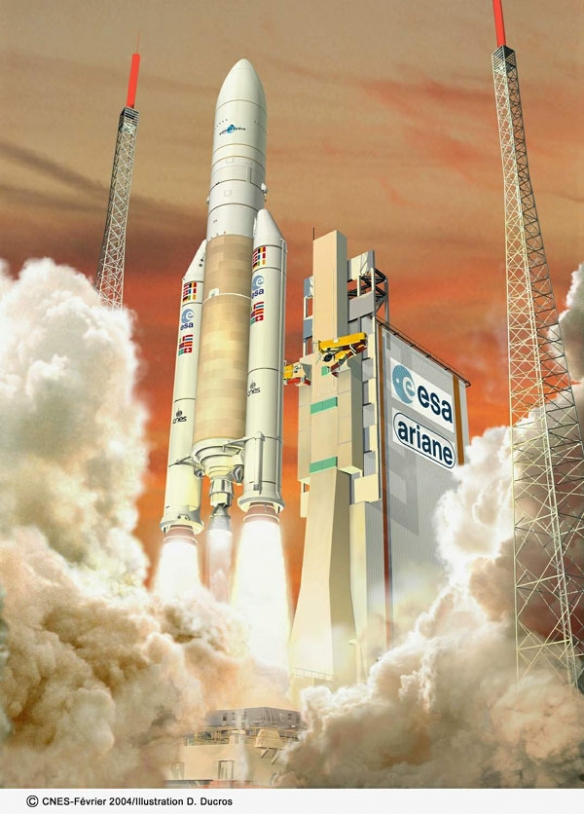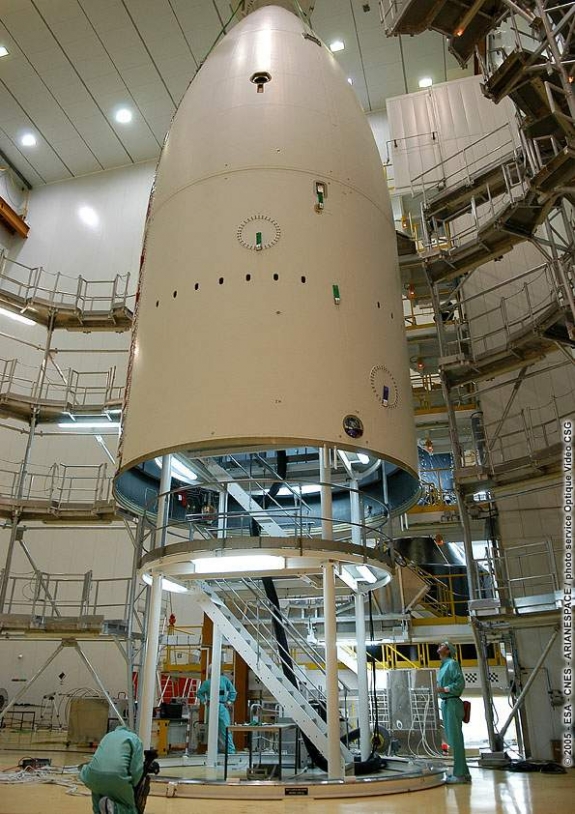Return to flight leaving nothing to chance
The failure of Ariane 5 ECA on its maiden flight in December 2002 was a bitter blow to all concerned. The root cause of the failure was identified as a mechanical anomaly on the exhaust nozzle of the Vulcain 2 main engine, which was subjected to loads beyond its thermal and mechanical design limits, despite guarantees provided by qualification testing.

Since then, all resources have been mobilized to implement the necessary corrections and scrutinize all critical points to get the heavy-lift launcher flying again.
These efforts have provided extra assurances to maximize the chances of success for the next launch, scheduled on 12 February.
Ariane 5 ECA will be carrying 3 passengers:
- the XTAR telecommunications satellite for the U.S.-Spanish XTAR consortium
- Sloshsat-FLEVO, a Dutch experimental minisatellite designed to study fluid behaviour in microgravity;
- the MAQSAT-B2 telemetry module, a dummy payload for ESA integrating various experiments and cameras.
Uprated version

Ariane 5 ECA’s upper stage has been receiving all the attention at the Guiana Space Centre this week as teams put it through a last series of checks. This stage is of course the chief innovation on this more powerful version of Ariane 5.
The Ariane 5 ECA is designed to place payloads weighing up to 9.4 tonnes into geostationary transfer orbit in dual-launch configuration (i.e., with 2 satellites on board). This compares with the 6-tonne capability of the generic version of the launcher.
Increased lift capacity is provided by:
- the ESC-A cryogenic upper stage, which replaces the EPS storable propellant stage used on the generic Ariane 5; the ESC-A stage employs the HM7B engine that logged more than 100 launch successes with Ariane 4;
- the Vulcain 2 engine driving the main stage, delivering 20% more thrust and 3 seconds more specific impulse than its Vulcain 1 predecessor;
- over 2,400 kg more propellant mass in the 2 EAP solid booster stages.
Flight 164 is scheduled on 12 February 2005 at 22h10.
